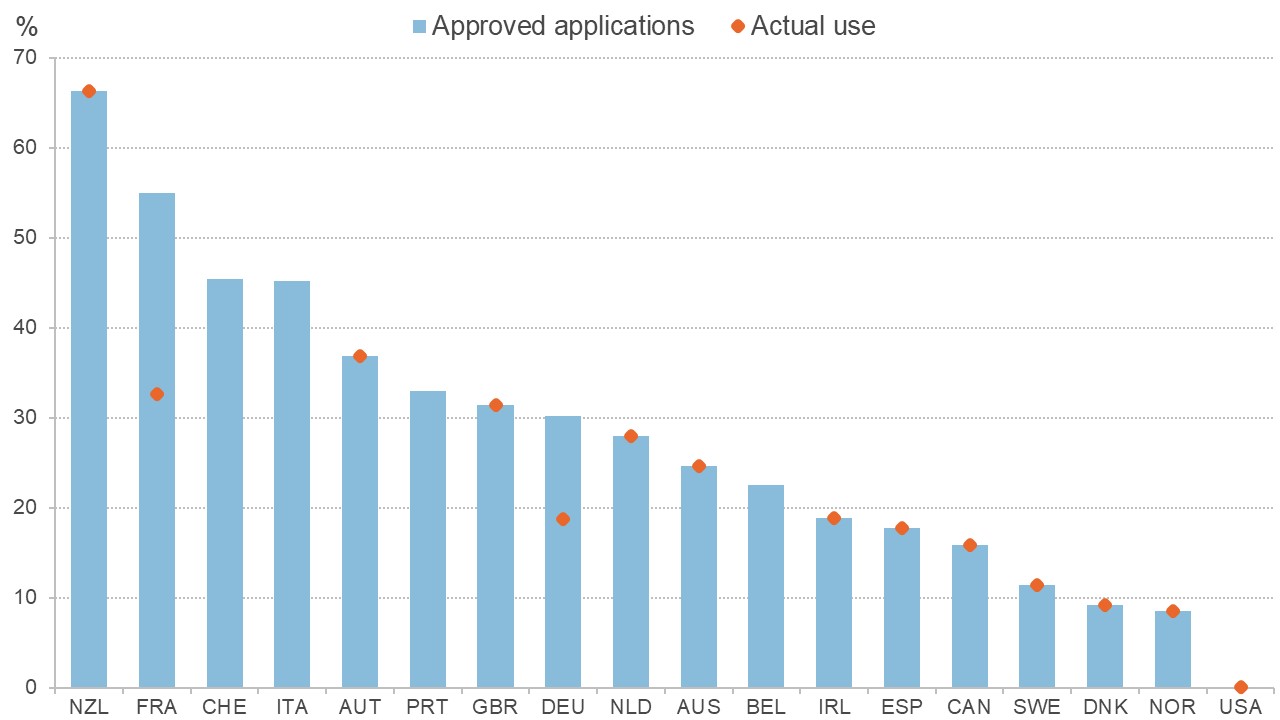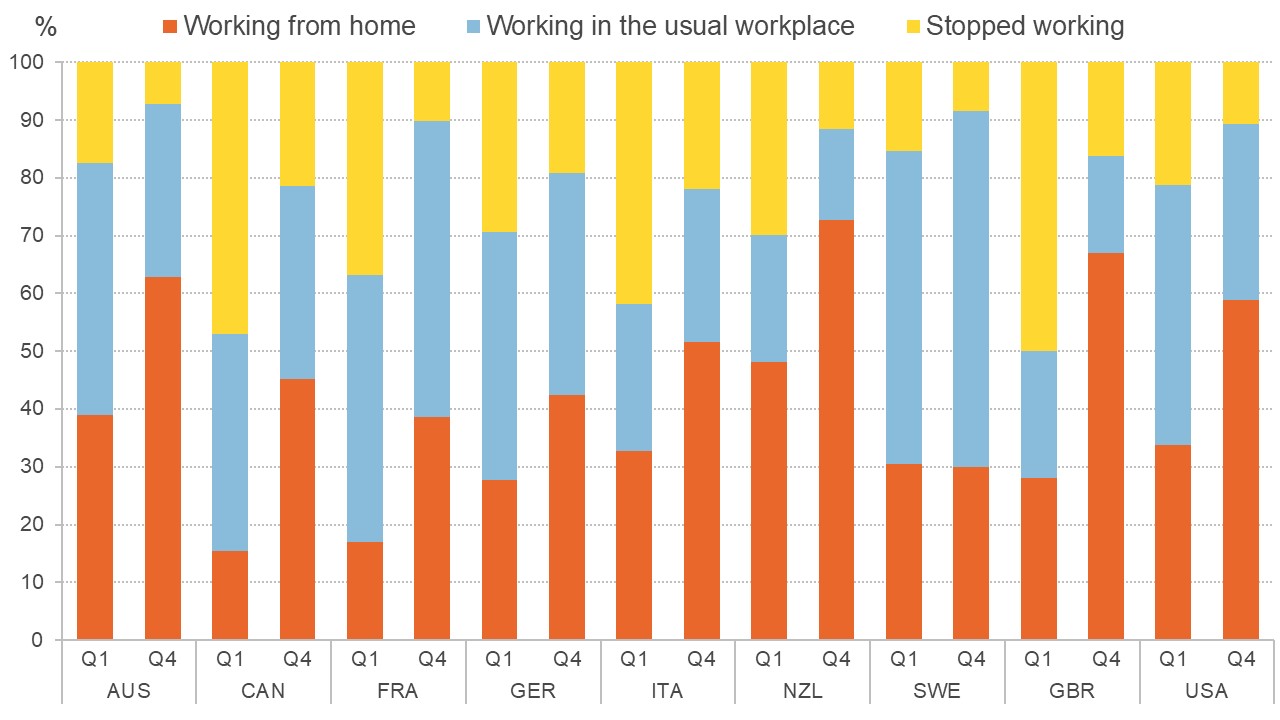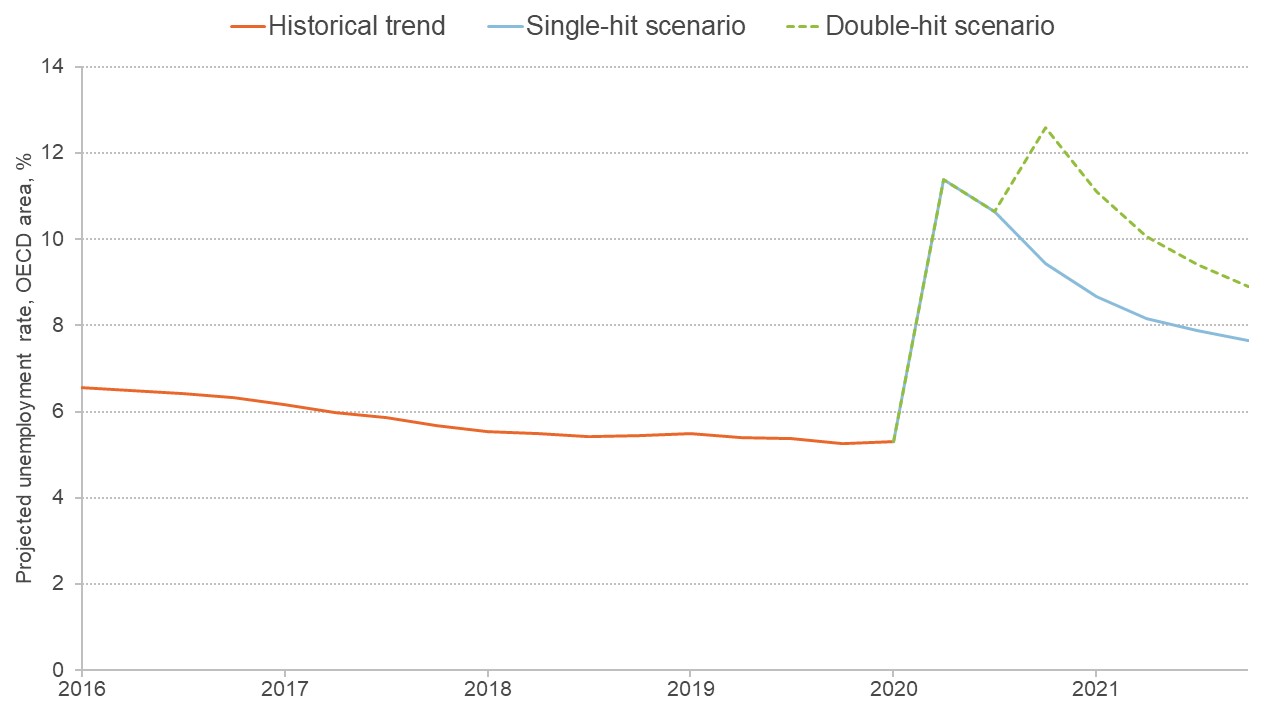The UK government has announced that the Coronavirus Job Retention Scheme will come to an end in October 2020. What has been its impact? How have similar schemes in other countries fared? Should it continue and what will happen when it finally ends?
In March 2020, the UK government introduced the Coronavirus Job Retention Scheme (CJRS). In the scheme’s initial guise, the government paid 80% of wages of workers who had been laid off (‘furloughed’) as a result of the pandemic. From July 2020, and in common with similar schemes in other countries, the CJRS allowed partial returns to work by employees, with cost-sharing between employers and the government to cover the difference between full-time and part-time wages.
The scheme as a whole is due to finish at the end of October 2020. But the Chancellor has announced a ‘job retention bonus’, which will provide a £1,000 one-off payment to UK employers for every furloughed employee they bring back and who remains continuously employed until the end of January 2021. Most commentators believe that this is too small a sum to make much difference to firms’ decisions as to whether or not to retain staff. Indeed several large employers, such as Primark, have announced that they will retain employers without claiming the bonus.
What similar schemes are there in other countries?
Most OECD countries, in common with the UK, have introduced job furlough schemes to deal with the consequences of the Covid-19 pandemic. At its peak, around 45 million workers in the UK and the eurozone were thought to be covered by job furlough schemes. But the incidence of these schemes on employment has varied considerably across economies.
For example, New Zealand has at one stage or another had two-thirds of its workforce in a job retention scheme. In contrast, the United States has not introduced any such scheme and has relied on its unemployment insurance system (with its generosity temporarily boosted) and local and federal handouts to individual companies to support the workforce through the pandemic. As a result, US unemployment peaked at just under 15% of the workforce in May 2020 whereas measured unemployment rates in other OECD countries remained much lower.
Figure 1: Participation in job retention schemes as a percentage of employees, end May 2020

Source: OECD (2020), Figure 1.8
Which employees have been most affected?
In the UK, according to data from HM Revenue and Customs (2020), 61% of female employees and 58% of male employees aged 17 had been furloughed in March 2020. High rates were also seen among workers in the 20-29 age bracket, with men rather than women having the higher rate in this age group because more women work in the public health and education sectors, where furlough rates are lower. Men in their forties were the least likely age group to be furloughed.
Not surprisingly, therefore, survey data from the Resolution Foundation (2020) show that workers in the UK that have been furloughed come disproportionately from the lower end of the earnings distribution. Nearly one-third of workers in the lowest quintile of the earnings distribution had been furloughed or lost their jobs completely, compared with 10% in the highest quintile.
Many furloughed workers had zero or variable hours contracts; those on temporary contracts often lost their jobs completely. In contrast, workers at the higher end of the earnings distribution have often been working from home.
OECD data show that this pattern is replicated across other countries: workers higher up the earnings distribution (in the fourth quartile) remained in post although a significant share worked from home. Few workers from the lower end of the earnings distribution (in the first quartile) were retained and allowed to work from home – they were furloughed, lost their jobs or continued to go to work.
Figure 2: Working status at first quartile (Q1) and fourth quartile (Q4) of earnings

Source: OECD (2020), Figure 1.12
One consequence of this reliance of lower paid and younger workers on the UK’s scheme is that initial estimates of the net budgetary costs of the CJRS per employee were over-estimated, having been assessed at earnings closer to the nationwide average.
Should the CJRS end and what happens next?
The object of the job furlough schemes was to encourage employers to retain workers in employment for the duration of a pandemic that was expected to be of a relatively short duration. As the pandemic subsided, and more workplaces re-opened, it was envisaged that the workforce would return to work – perhaps, initially, part-time – and the need for a job retention scheme would therefore inevitably lessen. As a result, some countries, such as the UK, placed time limits on the planned length under which the furlough schemes could continue from the very start.
Denmark, Spain and the UK are all countries that have been forced to extend the term limits of their schemes as the pandemic has continued to persist. Some, such as France, may yet do so. Other countries, such as Germany, envisage at least part of the furlough scheme continuing for more than a year and yet other countries have given no clear dates as to when their schemes will end.
There is a dilemma here for governments. Ending the scheme too early will cause immediate job losses. Indeed, there are almost certain to be job losses at the end of these schemes as some ‘zombie’ enterprises are simply being kept afloat currently by the subsidy. But there is always a natural turnover of firms as demand shifts between sectors, and this underlying change in demand structure has been heightened by the pandemic.
Continued subsidies of a retained workforce would impede the natural reallocation of labour towards sectors that are relatively buoyant (social care replacing personal care; home delivery channels replacing restaurants and similar outlets; and so on). Payments to laid-off workers would therefore simply incur ‘deadweight losses’ – either because the business had simply become unviable in the long run or through fraud, as some employers claimed the allowance even though some of their workers were effectively back at work.
But the pandemic has been slow to disappear. Indeed, it has begun to reappear in local hotspots in most OECD countries that have so far contained the virus, often in environments of relatively low-paid workers in relatively crowded workplaces. And there is always the risk of a large-scale second wave later in the year.
A national job furlough would surely have to be reintroduced in the event of a second major wave, but it is likely to be the wrong instrument for dealing with local outbreaks – where a combination of an effective test-and-trace and isolation system, coupled with transitory income support for those affected – should be the answer.
Some sectors face specific post-Covid-19 issues – for example, in industries where social distancing measures are likely to be retained for the foreseeable future (for example, hospitality and entertainment) as a result of which profit margins will suffer, or in industries which may now see a secular decline in revenues (such as aviation). Here, in such circumstances, attention should turn to state aid in the form of direct subsidies for enterprises that are thought to retain a future but which need major restructuring to survive in a post-Covid-19 world.
Unemployment will definitely go up when the schemes end – but by how much and for how long?
The OECD has pointed out that the Covid-19 shock to the labour market is around five times the magnitude of the financial shock a decade ago. Projections of the underlying unemployment rate in the near future depend on when and how job furlough schemes end and the possibility of a second wave of the virus.
Figure 3: Projected unemployment rate, OECD area

Source: OECD (2020) Figure 1.15
What of the UK? Projections of unemployment numbers for the UK are difficult to assess given the way the figures are measured, primarily as a benefit count. Nevertheless, most forecasts see the underlying unemployment rate peaking at between 10% and 15% of the labour force at the end of 2020 and perhaps halving by the middle of 2021.
I have underlined elsewhere the parallels and differences of the CJRS from the job retention scheme that was implemented in the UK after the last large-scale combined demand and supply shock – the oil price crisis of the 1970s. Subsequent to that shock, workers were subsidised by the Temporary Short-time Working Compensation Scheme (TSTWCS).
The incidence of this scheme was primarily seen in manufacturing industries such as textiles, where most of the subsidised workers were concentrated. A decade later, unemployment was falling but the share of employment of these sectors had considerably shrunk – the scheme did not seem to have rescued these industries that were, in some respects, in secular decline.
In the present context, the incidence of the CJRS is rather different insofar as it is focused on lower paid workers in the service sector. The service sector has been the fastest growing sector in the UK in the decades since the early 1980s and typically workers in that sector are more flexible, skill requirements are more easily obtained, and the workforce is typically younger.
But there is another parallel with the 1980s: the end of the oil price crisis also saw an economic shock induced by the macroeconomic policies of the incoming Thatcher administration – high interest rates, an attempt to restore fiscal budget balance quickly through tax rises, and a high exchange rate combined to hit precisely those industries that had most used the TSTWCS. And that parallel in the UK context is another expected shock to the economy in early 2021 – namely the end of the transition to Brexit.
Where can I find out more?
Millions of jobs at risk when furlough support: Financial Times.
Coronavirus Job Retention Scheme Statistics: July 2020: HM Revenue and Customs.
OECD Employment Outlook, 2020: Worker Security and the COVID-19 Crisis.
The effects of the coronavirus on workers, Resolution Foundation, May.









































